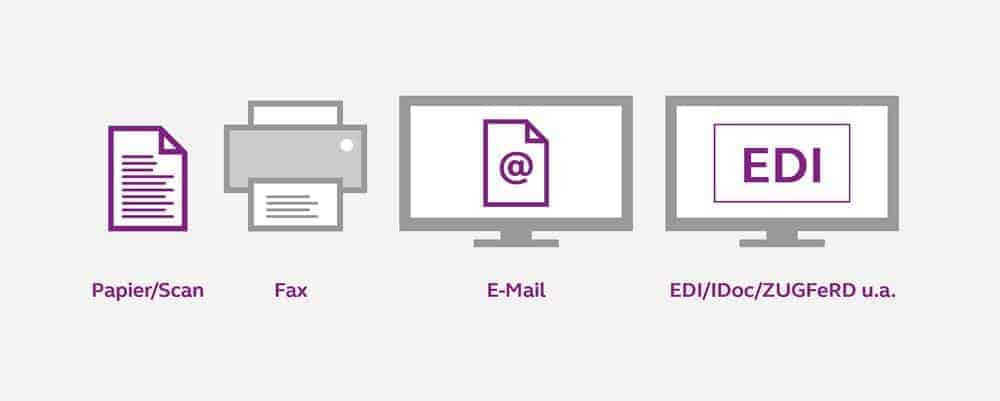Increased Value in Procurement With Digital Invoice Processing


Digital transformation was the key topic at the DSAG annual conference, which brought together a multitude of German-speaking SAP users. Under the motto “Business without limits—the architecture of the future”, participants discussed options on how to implement a digitalisation strategy. This included topics like the right platform, an appropriate cloud scenario, the right ERP solution and so on. To sum up: far-reaching decisions which companies certainly cannot make without a great deal of thought.
Prerequisite for digitization
One starting point of digital transformation is the optimization of e-mail and paper-based processes. Digitalisation means the connection of independent systems so that processes can run automatically without any human interference. Such networking requires data legible for machines.
Documents are therefore the ideal way to get started with digitalization: electronically saving and processing documents in purchasing, financial accounting or customer service are simple ways of making key business information accessible electronically without any modal fragmentation. Subsequent processes are automated, processing times are shortened, and errors avoided.
Countercheck only
In most companies, invoice processing is the area with the most potential for optimizing electronic document processes. Consequently, this is also where digitalisation starts. This approach has already been tried with great success at Continental’s ContiTech division, where inbound invoices are now automatically processed with tangro software.
“We no longer have to put data in manually, just do a brief double check. At the same time, we have an overview of all invoices. This means that we know where the documents are and we can follow the entire process,” says Frank Suendermann, head of IT Business Systems at ContiTech, outlining the benefits of digitalisation for him.
Digitally saving, processing, checking and archiving documents significantly cuts the process costs involved in invoice processing. Direct cost savings can also be achieved through improved discount payment.
The University Hospital of Munich, Germany, demonstrates the potential level of financial value that could be achieved: every year, the hospital saves a six-digit sum because automating invoice verification now allows them to take advantage of cash discounts that were simply lost before.
Consistent purchasing
However, digitalisation projects become even more effective if they do not end at invoice processing, but also have the objective to consistently automate all the other operations in purchasing: managing procurement, processing of order confirmations and recording delivery notes along with receipts. In procurement, the necessary order requests are stored electronically directly in the workstation and the cost center. All further steps run electronically: checks and approvals are undertaken by superiors just like account assignment in the accounting department.
With this approach, all important facts are clarified in advance and the purchase order can be placed automatically. Every order confirmation and delivery note that comes after can be processed much faster because important document content—material number or price and volume from the order confirmation—is recognized automatically and compared with the purchase information. The receipts can therefore be saved and stored in the shortest time possible.

Final step: Invoice processing
As the final step, invoice processing is greatly simplified by automation earlier in the process because the information required has already been saved. The relevant content of the document is recognized by the system and directly transferred and compared with the purchase order. All the required details relating to cost center and account assignment are already in place. An administrator only has to intervene if something needs clarifying. And again here, electronic processes greatly speed up and simplify processes—in this case workflow processes, which are beginning directly with the document.
imple and convenient handling ensure that the recipient can swiftly complete the job, especially since tasks can be undertaken not just at the office desk, but also when out and about—even by non-SAP users. If the system finds no discrepancies, the invoice can be saved automatically in the background. There is no longer any need for human intervention. The same applies to electronic invoices, which arrive in a structured form, in ZUGFeRD format or using a mail system for example. These are also seamlessly transferred into the ERP system where they are promptly stored. The systems are seamlessly connected—exactly like they need to be for digitalisation.
Customer project Continental
300,000 incoming invoices/year
Advantages of automation with Tangro software:
- Uniform, standardized solution approach
- Shared use of an infrastructure
- Easy handling
- Reduction of processing time to three minutes per document
- Improving transparency







